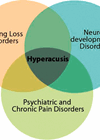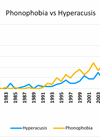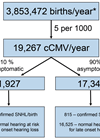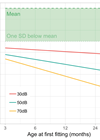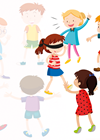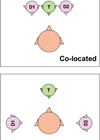Audiology features
Enhancing and extending hearing care using Ida Telecare
Tele-audiology has been on our radar for a long while, and evidence shows that its application in clinical practice is beneficial to both patients and clinicians. Cherilee Rutherford discusses the benefits and gives an overview of the freely-available tools developed...
Physiological mechanisms of hyperacusis: an update
Hyperacusis is a heterogeneous and complex clinical entity, and proposals about physiological mechanisms should reflect these issues. Ben Auerbach helps us navigate through present knowledge in this area, and proposes future directions for research. Hyperacusis is a debilitating hearing disorder...
Untangling the emotional and physiological aspects of hyperacusis
In hyperacusis, the physiological and the emotional aspects can become deeply entwined. Dr Sarah Theodoroff draws us into her perspectives on this important aspect of the condition. Background Sounds and Emotions The basic act of hearing sounds triggers an emotional...
Unravelling the mystery of hyperacusis with pain
When a person says that sound causes them pain, how can we understand this, and determine what processes are involved? Bryan Pollard navigates us through what is presently known. Pain has long been underrepresented – and often, completely overlooked –...
Targeted CMV screening and hearing management of children with congenital cytomegalovirus infection
Congenital cytomegalovirus (cCMV) infection is a common congenital infection and is the leading infectious cause of sensorineural hearing loss (SNHL) in children. Prof Karen Fowler discusses current research and the exciting future of screening for cCMV in newborns. Figure 1....
Facing up to the challenge of behavioural observation in infant hearing assessment
The ability to assess detection and discrimination of speech by infants has proved elusive. Dr Iain Jackson and colleagues discuss how new technologies and fresh approaches might offer valuable insight into young infants’ behavioural responses to sound. The limits of...
Cochlear implantation in children with single-sided deafness: rationale and early findings
Cochlear Implantation (CI) in children with single-sided deafness (SSD) is a controversial treatment option. Profs Karen Gordon, Papsin and Cushing discuss the rationale and early findings on the relative success of achieving binaural hearing for SSD with CI. If you’d...
How should we detect and identify deficit-specific auditory processing disorders?
The human central auditory nervous system (CANS) is complex and highly dependent upon attention and cognitive brain regions. Profs David Moore and Harvey Dillon discuss novel assessment approaches to clarify auditory contributions to listening difficulties in children. How can we...
Hearing, tinnitus and hyperacusis in the arts
Hearing loss, tinnitus and hyperacusis are discussed by David Baguley from the unique perspective of their depictions in literature, music, film and paintings. This article provides unusual and invaluable reflective opportunities for the patient-centred clinician! Audiologists and otologists understand hearing...
Tinnitus and music
Marc Fagelson discusses how not just hearing loss, but tinnitus and hyperacusis and impairments to an individual’s ability to process music can adversely affect one’s quality of life, as well as their overall interactions from a societal and personal perspective....
Music is noise
Marshall Chasin recaps what we know acoustically about music and noise, and discusses the potentially damaging levels of music, how temporary threshold shift (TTS) is not necessarily temporary and gives us some considerations for protective devices for musicians. Most of...
Taking a fresh look at otoacoustic emissions
So what has changed in four decades of OAEs? Do we now have all the answers? Have we reached our optimum recording ability? Professor Kemp explains what we know, what we don’t know and what’s to come. In the 40...



